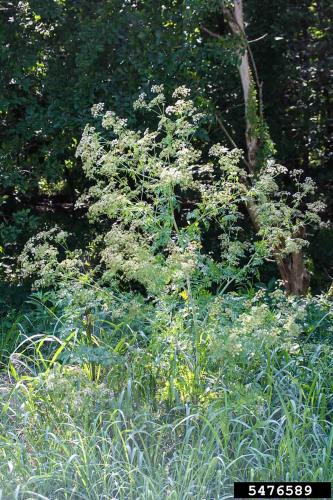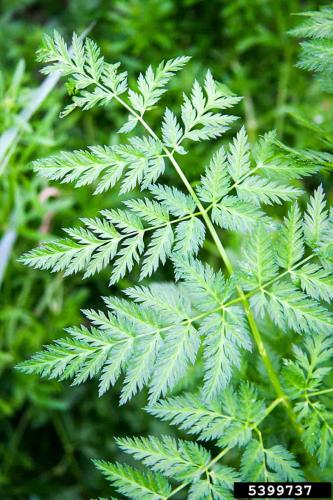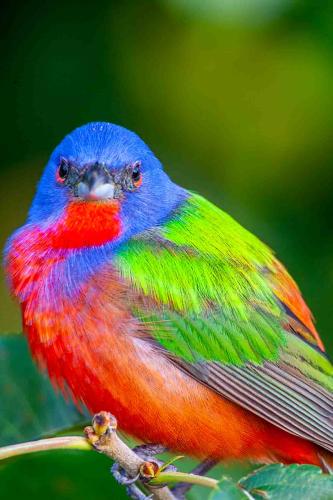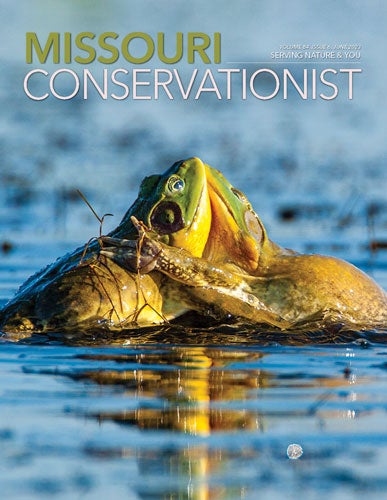Leave Wildlife Wild
Young wildlife may appear abandoned, but that’s rarely the case
Newborn wildlife can pull on our heartstrings, especially if you find them alone. But, interfering with wildlife usually does more harm than good, so leave wildlife wild.
A common newborn animal people come across in spring is young birds. If you see a chick with feathers hopping on the ground, leave it alone because it’s a fledgling and the parents are nearby keeping watch. Fledglings can spend up to 10 days hopping on the ground, learning to fly. If you find one that has no feathers, you can return it to the nesting area, if possible, as it likely fell out of its nest.
Don’t “rescue” newborn rabbits. Wild rabbits seldom survive in captivity and can die of fright from being handled. Even if the animal is injured, it’s best to return it to the nest because the mother will most likely return.
Human scent does not cause wild mothers to reject their young, but most newborn animals do not survive in captivity. Wildlife can also become dangerous as they mature, carry disease and parasites, and cause property damage.
For more information, visit short.mdc.mo.gov/4A5.
MDC Honors Former Commissioner Bedell
MDC recently honored former Commissioner Don Bedell during a dedication ceremony for the new Don C. Bedell Unit of Peck Ranch Conservation Area (CA) in the Missouri Ozarks.
Bedell, an avid conservationist and enthusiastic sportsman, served on the Missouri Conservation Commission through 2021 after serving two six-year terms. During his time serving on the Conservation Commission, Bedell saw MDC accomplish numerous feats, including the historic restoration of once-native elk at Peck Ranch CA in the Missouri Ozarks.
The 5,805-acre property, formerly known as Chilton Creek Research and Demonstration Area, contains some of the most biologically important woodland habitat in the Midwest and is surrounded by Peck Ranch CA, Rocky Creek CA, and Ozark National Scenic Riverway.
The Don C. Bedell Unit will be open to the public and managed by MDC for multiple uses under certification through the Sustainable Forestry Initiative.
For more information on Peck Ranch CA, visit short.mdc.mo.gov/4AS.
Give Turtles a Brake!
Be cautious on the roads this spring and give turtles a brake! These reptiles are often hit by cars during the warmer months but are at special risk this time of year because they are more active. Common turtles spotted crossing Missouri roads include three-toed box turtles, ornate box turtles, and snapping turtles.
Vehicles are one of the leading threats box turtles face in Missouri, and MDC urges motorists to be cautious and slow down if they see a turtle in the road. If helping a turtle make it safely across, check for traffic and always move the turtle in the direction it is traveling.
Additionally, MDC urges the public to leave turtles in the wild. Taking a wild animal, whether a turtle or other wildlife species, and keeping it as a pet normally ends in a slow death. Leave turtles in the wild, follow the speed limit, and keep your eyes on the road.
New Cases of CWD Reported
MDC staff sampled and tested more than 33,000 deer for chronic wasting disease (CWD) during the 2022 CWD surveillance year between July 2022 and April 2023. Of the more than 33,000 deer sampled, 117 tested positive for CWD.
Those 117 deer bring the total number of CWD cases found in the state to 409 since the first case in wild deer was confirmed by MDC in early 2012. Including recent sampling efforts, more than 243,000 tissue samples from wild deer have been collected for CWD testing in Missouri since MDC began surveillance in 2002.
It is a 100 percent fatal disease in white-tailed deer and other members of the deer family. The disease has been attributed to significant deer population declines in other states. Learn more at mdc.mo.gov/cwd.
Makayla Leppert
Christian County
Conservation Agent
June is a great time to get outside and try a new activity or perfect a favorite hobby. Kayaking has grown in popularity and with more than 110,000 miles of running water in the state, Missouri is the perfect place to start paddling. Water temperatures are getting warm, and fish are biting. Get out there and experience the thrill. If you are in the southwest Missouri area, a popular spot is Busiek State Forest and Wildlife Area. The area offers a shooting range, hiking, biking, horseback riding, camping, birdwatching, and shallow streams to explore. Need help finding a conservation area in your neck of the woods? Visit short.mdc.mo.gov/Z9o. Looking for a new activity? Download the MO Outdoors app at mdc.mo.gov/mooutdoors. Nature awaits.
Invasive nonnative species destroy habitat and compete with native plants and animals. Please do what you can to control invasive species when you landscape, farm, hunt, fish, camp, or explore nature.
Poison Hemlock
by Angela Sokolowski
Poison hemlock (Conium maculatum) is a toxic biennial forb in the carrot family that spreads via seeds. Its leaves are highly dissected and fernlike in appearance. The leaves and flowers are similar to Queen Anne’s lace, but unlike similar species, poison hemlock leaves will not have hairs.
First year plants are low basal rosettes. Second year plants grow up to 8 feet tall and flower. Marked with distinct maroon or purple blotches, the stalks are hollow and hairless, except at the nodes. Umbrella-shaped clusters of small white flowers bloom May through July.






Why It’s Bad
Poison hemlock not only out-competes native vegetation, but it is also toxic to humans and animals. Toxins are found inside the tissues of all parts of the plant and can affect humans, cattle, horses, and other livestock. Ingestion is the primary cause of toxic effects, which can be fatal. Exposure to skin can cause irritation, and exposure to mowed or burned plants can cause respiratory irritation in some. Even dead and dried plants contain toxins for several years, so these plants should not be hayed or fed to livestock.
How to Control It
Use caution and always protect skin from exposure by wearing gloves, long sleeves, and pants during any control activities. Launder workwear after use.
Manual: Small populations can be pulled or dug. Remove the entire taproot, place plants in plastic bags, and dispose in the trash.
Mechanical: Mow before plants flower to prevent seed production. Wearing a mask is recommended. Stalks will regrow and require repeated mowing.
Chemical: Herbicide application to rosettes in spring or fall is most effective for eradication. Glyphosate, triclopyr, and 2, 4-D based products are commonly used. Always follow herbicide label instructions.
To learn more, visit short.mdc.mo.gov/4Qu.




Painted Bunting
The brightly colored markings of adult male painted buntings are not easily confused with any other birds. Male painted buntings have blue heads, lemon-green backs, green wings, reddish rumps, and red rings around each of their eyes. Birding was made for birds as beautiful as painted buntings. Once you spot one amongst the thickets and shrubs they prefer, you will be hooked.
And More...
This Issue's Staff
Editor - Angie Daly Morfeld
Associate Editor - Larry Archer
Photography Editor - Cliff White
Staff Writer - Kristie Hilgedick
Staff Writer - Joe Jerek
Staff Writer – Dianne Van Dien
Designer - Shawn Carey
Designer - Marci Porter
Photographer - Noppadol Paothong
Photographer - David Stonner






















